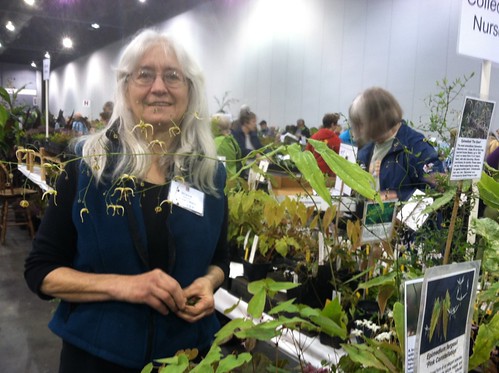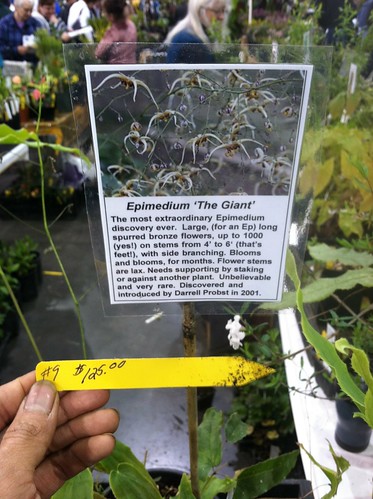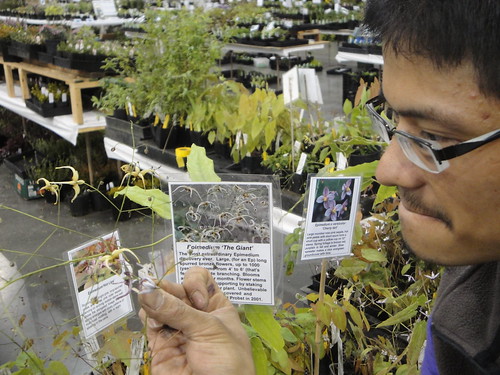Their book is "The 50 Mile Bouquet: Seasonal, Local, and Sustainable Flowers"
I've been meaning to pay her a visit, but the push to make the appointment came about when a volunteer of mine at the UW shared that she and a classmate of hers were starting up a small business doing landscape design and custom floral work. She expressed such a deep interest in using locally grown and produced materials and I thought it would be a perfect field trip for her to meet Diane and also see where some of her future "cuts" may come from.
Diane kindly welcomed us and gave us a tour of her fields and growing production. While there weren't acres and acres of fantastic flowers just yet, we saw the roots and foundation of a successful and productive flower crop.
Rows and rows of dahlia cuttings rooted and hardening off, beds of one of my favorite, self seeding annuals, Cerinthe, the sweet peas beginning to climb up their trellises. It looks like so much hard work, yet it was compelling to witness just how it all works and grows.
 | |||||
| Diane with a luscious tree peony just starting to open |
 |
| A tree peony bud almost ready to pick. |
 The greatest thing about small cut flower farms like Jello Mold is the emphasis on diversity. They freely experiment on what makes a great "cut" and use such a wide assortment of varieties so nothing goes to waste. They compost, use biological controls, no chemicals and everything is able to "go back to the earth". From the young shoots of ornamental grasses to the colorful abundance of fruits in the fall and winter, designers are blessed with a plethora of plant selections and it forces them to really think outside of the box in assembling their creations. It truly is fascinating!
The greatest thing about small cut flower farms like Jello Mold is the emphasis on diversity. They freely experiment on what makes a great "cut" and use such a wide assortment of varieties so nothing goes to waste. They compost, use biological controls, no chemicals and everything is able to "go back to the earth". From the young shoots of ornamental grasses to the colorful abundance of fruits in the fall and winter, designers are blessed with a plethora of plant selections and it forces them to really think outside of the box in assembling their creations. It truly is fascinating!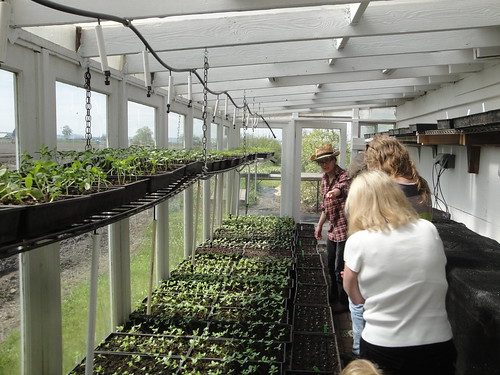 |
| Diversity begins inside a simple greenhouse where she sows an array of different varieties along with some customer requests. |
 |
| Hellebores make a good cut as well, but you have to harvest them after the stamens fall of. |
 |
| A flat of seedlings hardening off with Jello Molds behind. =) |
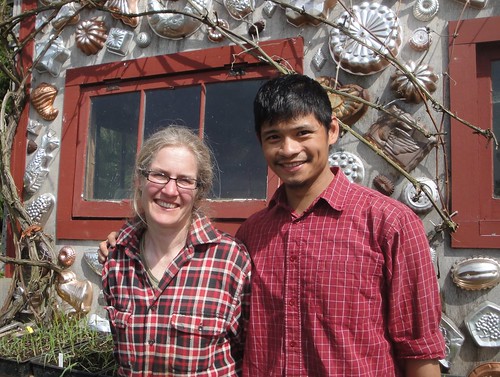 What's most remarkable and noteworthy about Diane is her work ethic and commitment to her craft. I could not believe that she runs that farm with very minimal help and she also does landscape work in the Seattle area just to keep the farm going! She is full force, smart, and absolutely A HERO wanting to make a positive change in our world by sharing her world of responsibly grown flowers to brighten our spirits.
What's most remarkable and noteworthy about Diane is her work ethic and commitment to her craft. I could not believe that she runs that farm with very minimal help and she also does landscape work in the Seattle area just to keep the farm going! She is full force, smart, and absolutely A HERO wanting to make a positive change in our world by sharing her world of responsibly grown flowers to brighten our spirits.I must come back and visit this summer when everything is burst into blooms!
For more information on Jello Mold Farm and where you can get their flowers, Visit their website:
www.jellomoldfarm.com
R


